Potřebujeme váš souhlas k využití jednotlivých dat, aby se vám mimo jiné mohly ukazovat informace týkající se vašich zájmů. Souhlas udělíte kliknutím na tlačítko „OK“.
ASTM E1636-10
Standard Practice for Analytically Describing Depth-Profile and Linescan-Profile Data by an Extended Logistic Function (Withdrawn 2019)
Automaticky přeložený název:
Standardní praktiky pro Analyticky Popisovat hloubky profilu a Linescan profil dat pomocí rozšířené logistické funkce
NORMA vydána dne 1.1.2010
Informace o normě:
Označení normy: ASTM E1636-10
Poznámka: NEPLATNÁ
Datum vydání normy: 1.1.2010
Kód zboží: NS-42458
Počet stran: 8
Přibližná hmotnost: 24 g (0.05 liber)
Země: Americká technická norma
Kategorie: Technické normy ASTM
Kategorie - podobné normy:
Anotace textu normy ASTM E1636-10 :
Keywords:
depth-profile interface data, linescan interface data, logistic function, Composition analysis--metals/alloys, Extended logistic function, Interface profile analysis, Logistic function, SIMS (secondary ion mass spectrometry), Sputter depth profiling data, ICS Number Code 71.040.50 (Physicochemical methods of analysis)
Doplňující informace
| Significance and Use | ||||||||
|
Information on interface composition is frequently obtained by measuring surface composition while the specimen material is gradually removed by ion bombardment (see Guide E1127 and Practice E1162). In this way, interfaces are revealed and characterized by the measurement of composition versus depth to obtain a sputter-depth profile. The shape of such interface profiles contains information about the physical and chemical properties of the interface region. In order to accurately and unambiguously describe this interface region and to determine its width (see Guide E1438), it is helpful to define the shape of the entire interface profile with a single analytic function. Interfaces in depth profiles from one semi-infinite medium to another generally have a sigmoidal shape characteristic of the cumulative logistic distribution. Use of such a logistic function is physically appropriate and is superior to other functions (for example, polynomials) that have heretofore been used for interface-profile analysis in that it contains the minimum number of parameters for describing interface shapes. Measurements of variations in signal intensity or surface composition as a function of position on a surface give information on the shape of a step or topographic feature on a surface or on the sharpness of an interface at a phase boundary. The shapes of steps or other features on a surface can give information on the lateral resolution of a surface-analysis technique if the sample being measured has sufficiently sharp edges (see ISO 18516). Similarly, the shapes of compositional variations across a surface can give information on the physical and chemical properties of the interface region (for example, the extent of mixing or diffusion across the interface). It is convenient in these applications to describe the measured linescan profile with an appropriate analytic function. Although the logistic distribution is not the only function that could be used to describe measured linescans, it is physically plausible and it has the minimum number of parameters for describing such linescans. Many attempts have been made to characterize interface profiles with general functions (such as polynomials or error functions) but these have suffered from instabilities and an inability to handle poorly structured data. Choice of the logistic function along with a specifically written least-squares procedure (described in Appendix X1) can provide statistically evaluated parameters that describe the width, asymmetry, and depth of interface profiles or linescans in a reproducible and unambiguous way. |
||||||||
| 1. Scope | ||||||||
|
1.1 This practice describes a systematic method for analyzing depth-profile and linescan data and for accurately characterizing the shape of an interface region or topographic feature. The profile data are described with an appropriate analytic function, and the parameters of this function define the position, width, and any asymmetry of the interface or feature. The use of this practice is recommended in order that the shapes of composition profiles of interfaces or of linescans of topographic features acquired with different instruments or techniques can be unambiguously compared and interpreted. 1.2 This practice is intended to be used for two purposes. First, it can be used to describe the shape of depth-profiles obtained at an interface between two dissimilar materials that might be measured by common surface-analysis techniques such as Auger electron spectroscopy, secondary-ion mass spectrometry, and X-ray photoelectron spectroscopy. Second, it can be used to describe the shape of linescans across a detectable topographic feature such as a step or a feature on a surface that might be measured by a surface-analysis technique, scanning electron microscopy, or scanning probe microscopy. The practice is particularly valuable for determining the position and width of an interface in a depth profile or of a feature on a surface and in assessments of the width as an indication of the sharpness of the interface or feature (a characteristic of the material system being measured) or of the achieved depth resolution of the profile or the lateral resolution of the linescan (a characteristic of the particular analytical technique and instrumentation). 1.3 The values stated in SI units are to be regarded as standard. No other units of measurement are included in this standard. 1.4 This standard does not purport to address all of the safety concerns, if any, associated with its use. It is the responsibility of the user of this standard to establish appropriate safety and health practices and determine the applicability of regulatory limitations prior to use. |
||||||||
| 2. Referenced Documents | ||||||||
|
Podobné normy:
Historická
1.9.2009
Historická
1.10.2009
Historická
15.9.2014
Historická
1.11.2013
Historická
1.6.2012
Historická
1.6.2013
Doporučujeme:
EviZak - všechny zákony včetně jejich evidence na jednom místě
Poskytování aktuálních informací o legislativních předpisech vyhlášených ve Sbírce zákonů od roku 1945.
Aktualizace 2x v měsíci !
Chcete vědět více informací? Podívejte se na tuto stránku.


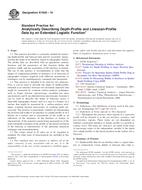
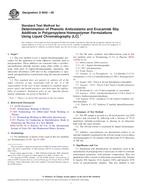 ASTM D6042-09
ASTM D6042-09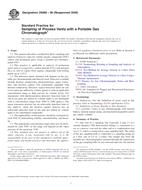 ASTM D6060-96(2009)..
ASTM D6060-96(2009).. ASTM D6071-14
ASTM D6071-14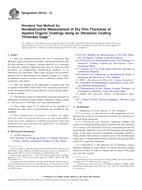 ASTM D6132-13
ASTM D6132-13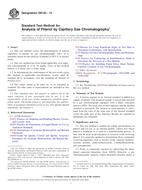 ASTM D6142-12
ASTM D6142-12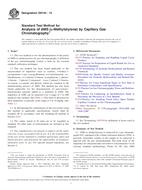 ASTM D6144-13
ASTM D6144-13
 Cookies
Cookies
